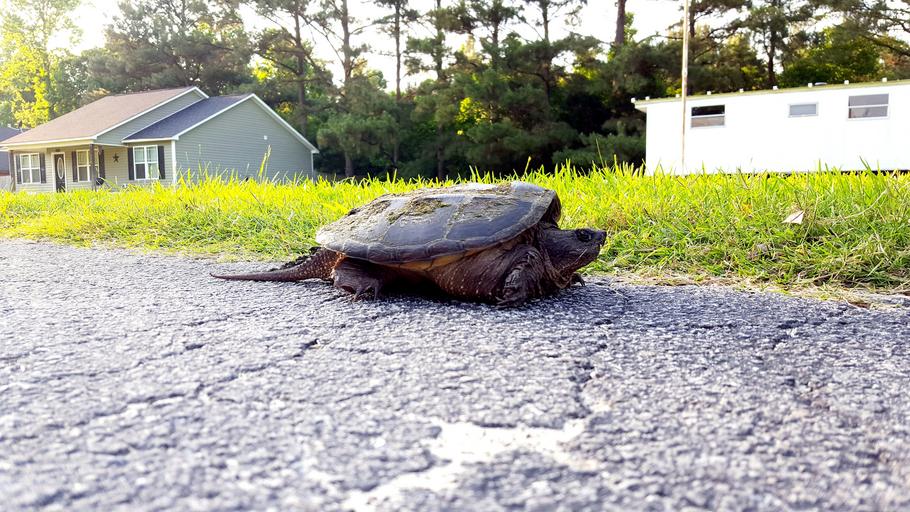MAKE A MEME
View Large Image

| View Original: | Snapping_Turtle.jpg (5312x2988) | |||
| Download: | Original | Medium | Small | Thumb |
| Courtesy of: | www.flickr.com | More Like This | ||
| Keywords: #uncweteal uncweteal bio366 uncw summer2016 north carolina northcarolina wild turtle ecology image2 animal nature outdoor What we have here is the Chelydra serpentina or the common snapping turtle in my driveway in Richlands North Carolina. Snapping turtles have a geographic range that extends from the east coast of the United States almost all the to the west coast and even up in parts of Canada. Since turtles are ectotherms I was curious to know how the different temperatures would affect their ability to catch prey. Turns out that while the temperature does in fact decrease jaw velocity and acceleration, the snapping turtles in the northern most limits spend more time basking than their southern relatives. The basking helps warm them up enough to be able to catch mobile prey(Vervust et al 2011). Reference Vervust, B., J. Brecko, and A. Herrel. 2011. Temperature Effects on Snapping Performance in the Common Snapper Chelydra serpentina (Reptilia, Testudines). Journal of Experimental Zoology Part a-Ecological Genetics and Physiology 315A:41-47. What we have here is the Chelydra serpentina or the common snapping turtle in my driveway in Richlands North Carolina. Snapping turtles have a geographic range that extends from the east coast of the United States almost all the to the west coast and even up in parts of Canada. Since turtles are ectotherms I was curious to know how the different temperatures would affect their ability to catch prey. Turns out that while the temperature does in fact decrease jaw velocity and acceleration, the snapping turtles in the northern most limits spend more time basking than their southern relatives. The basking helps warm them up enough to be able to catch mobile prey(Vervust et al 2011). Reference Vervust, B., J. Brecko, and A. Herrel. 2011. Temperature Effects on Snapping Performance in the Common Snapper Chelydra serpentina (Reptilia, Testudines). Journal of Experimental Zoology Part a-Ecological Genetics and Physiology 315A:41-47. | ||||